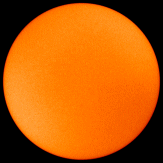The biggest news this week was STS-126's mission to the International Space Station to deliver equipment and make necessary upgrades to double the number of crew the ISS can support – to a big total of six. Among the most amusing aspects of the mission: Astronaut Heidemarie Stefanyshyn-Piper lost a tool bag containing tools valued at $100,000 during a spacewalk. Fortunately it did not pose a danger to the station or the shuttle and is now a part of the floating space debris orbiting our planet. Take a look at the bag filmed from this side:
While Captain Stefanyshyn-Piper took responsibility for the loss of the valuable equipment, I challenge those who criticize her to do what she does. Take a look at the view from her office and see if you can work in those conditions:

The Endeavour will return home on Sunday at 13:18 EST (18:18 UTC).
And speaking of satellites: Here's a nifty site that lets you know what objects will be floating over your home tonight: Satellite Tracker.
A Husband and Wife Reunion
NASA is gearing up for a new mission to Jupiter. The Juno mission will place a spacecraft in an elliptical orbit around the red giant to study its formation, evolution and structure. The mission will be launched from Cape Canaveral, Florida in August 2011 and will reach Jupiter in 2016. It will also be the first solar-powered spacecraft to operate so far from the sun, proving the great advances in solar technology made in recent years.

Glaciers on Mars
NASA's Mars Reconnaissance Orbiter has revealed vast glaciers of water ice under rocky debris at much lower latitudes than any ice previously identified on Mars. Scientists are very excited about the find because it will mean future manned exploration missions will have access to water far away from the polar caps.

Maybe someday we'll be able to go skiing on the Glaciers of Mars just like The Governator did in Total Recall.
No Longer just the WORLDwide Web
NASA successfully tested the first deep space communication network using software based on the Internet, with the intent that it will be an interplanetary internet system. Engineers from NASA's Jet Propulsion Laboratory in Pasadena, Calif., used software called Disruption-Tolerant Networking, or DTN, to transmit dozens of space images to and from a NASA science spacecraft located about more than 32 million kilometers (20 million miles) from Earth.

In the next few years, the Interplanetary Internet could enable different missions involving multiple landed, mobile and orbiting spacecraft. Communications between the differing systems will be far easier to support through the use of the Interplanetary Internet. It could also ensure reliable communications for astronauts on the surface of the moon.
Thanksgiving Sunspot
A new sunspot formed on Thanksgiving. Take a peek of this close-up:

But seriously, a sunspot was beginning to form, but it fizzled away.
Near-Earth Objects
On November 28, 2008 there were 1002 potentially hazardous asteroids.
Nov. 2008 Earth-asteroid encounters:
| Asteroid | Date(UT) | Miss Distance | Mag. | Size |
| 2008 TX3 | Nov. 1 | 9 LD | 19 | 45 m |
| 2008 UT95 | Nov. 2 | 1.5 LD | 17 | 15 m |
| 2008 UC7 | Nov. 2 | 4.5 LD | 20 | 17 m |
| 2008 VM | Nov. 3 | 0.1 LD | 20 | 4 m |
| 2008 VA4 | Nov. 4 | 7.7 LD | 17 | 49 m |
| 2008 VB4 | Nov. 4 | 1.3 LD | 18 | 10 m |
| 2008 VC | Nov. 4 | 4.4 LD | 20 | 18 m |
| 4179 Toutatis | Nov. 9 | 20 LD | 14 | 3.8 km |
| 2008 WO2 | Nov. 16 | 1.0 LD | 20 | 5 m |
| 2004 XK3 | Nov. 18 | 1.8 LD | 15 | 60 m |
| 2008 VZ3 | Nov. 22 | 5.7 LD | 18 | 55 m |
| 2008 WD | Nov. 24 | 6.9 LD | 19 | 30 m |
| 2008 WC | Nov. 26 | 5.1 LD | 19 | 23 m |
| 2008 WM61 | Nov. 27 | 3.5 LD | 18 | 20 m |
Aurora News
The auroras this month were caused mainly by two solar wind streams hitting Earth, one on Nov. 7th and another on Nov. 24th. Here's a movie taken November 26th.
And two more pics from this week:


Space Weather Today
Solar wind
speed: 490.9 km/sec
density: 0.9 protons/cm3
explanation | more data
Updated: Today at 1355 UT
6-hr max: A0 1355 UT Nov28
24-hr: A0 1355 UT Nov28
explanation | more data
Updated: Today at: 1355 UT

What is the sunspot number?
Updated 27 Nov. 2008
Thanks to SpaceWeather.com and the NASA Homepage as well as the various photographers and artists for their information which is presented here for entertainment and self-educational purposes only. No copyright infringement is intended.
--->Susan


1 comment:
Very interesting about the glaciers found on Mars.
Umm...
Post a Comment